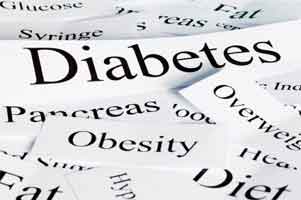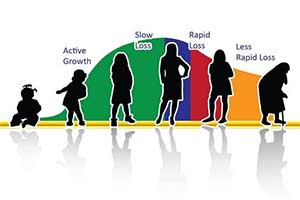Delaying the effects of aging through safe hormonal therapy
A group of researchers from diverse Spanish public entities, including UPM, has developed the bases of a new model to better classify patients when it comes to prescribing anabolic hormone supplementation.
 A female researcher from Faculty of Sciences for Physical Activity and Sport (INEF) at UPM is involved in a research project that shows the role of muscular function in the correlation between the hormonal status and hospitalization and mortality risk. As a result of the Toledo Study for Healthy Aging, researchers have designed a clinical method that allows them to classify patients that can receive hormonal therapy safely to mitigate the negative effects of aging.
A female researcher from Faculty of Sciences for Physical Activity and Sport (INEF) at UPM is involved in a research project that shows the role of muscular function in the correlation between the hormonal status and hospitalization and mortality risk. As a result of the Toledo Study for Healthy Aging, researchers have designed a clinical method that allows them to classify patients that can receive hormonal therapy safely to mitigate the negative effects of aging.
Aging is an inevitable process that entails a series of consequences that will alter our health in a negative way. These changes in our organism occur in organs and system and also at hormonal level. As our body ages, the concentrations of anabolic hormones tend to decrease.
These hormones transmit messages to the whole organism with the aim of developing new biomolecules, that is, they are associated with the growth of diverse tissues and organs, including the skeletal muscle.
Therefore, this decrease of hormone concentration might cause progressive muscular atrophy due to insufficient regeneration of muscular tissues. In addition, as we grow older we tend to accumulate more fat mass, and as a result we have people with physical dysfunction, reduced mobility and, consequently, with greater dependence and mortality.
For this reason, hormone supplementation could be a suitable way of curbing the negative effect of aging. However, we must watch over this type of supplement since it has serious adverse effects, such as higher prevalence of cardiovascular events. Starting from this background, researchers have given the first steps to design a clinical method to distinguish the patients who could benefit from this supplement from the patients who could result more harmed.
“The innovative idea of this model lies in that it does not only take into account the concentration of anabolic hormones in the organism, but also the correlation between these concentrations and the muscular effort exerted by the individual”, states Amelia Guadalupe-Grau. She is a professor at Faculty of Sciences for Physical Activity and Sport (INEF) and a member of the research group of ImFINE.
As a result, we have seen that the muscular function can help better understand the correlations between the levels of anabolic hormones and health events, thus researchers will be able to specifically select those patients that should potentially receive hormone therapy and those patients who could benefit most from a physical exercise program.
Researchers observed that mortality risk and hospitalization are closely related to the balance of hormone/total strength ratio. If this ratio is unbalanced, mainly due to a high hormonal concentration for average values or low muscular strength or the when strength levels are below the hormonal levels, we have a situation of hormonal deregulation.
It is believed that at least part of this deregulation is due to the fact that the receptors of these hormones do not work properly, and therefore the muscular atrophy is not caused by the lack of anabolic hormones, but because target organs of these hormones cannot grasp them properly, then the signal does not arrive.
“We have to be careful when supplementing with hormones. We need to ensure that we are using the right dose. When the dose is small, it causes not effect. However, if the dose exceeds the right values, the adverse effects such as cardiovascular events are much common”, states Dr. Guadalupe-Grau. Thus, thank to this new method we will be able to prescribe the hormone treatment in a safer way for the patient.
According to this study, which was published in Journal of the American Medical Directors Association (JAMDA), the supplementation will be inappropriate when patients have a hormonal deregulation caused by a failure in the hormone receptors (indirectly measured through the muscular strength).
Source: Universidad Politécnica de Madrid
Full bibliographic information:
Guadalupe-Grau, A.; Carnicero, J.A.; Losa-Reyna, J.; Tresguerres, J.; Gómez-Cabrera, M.C.; Castillo, C.; Alfaro-Acha, A.; Rosado-Artalejo, C.; Rodríguez-Mañas, L.; García-García, F.J. Endocrinology of Aging From a Muscle Function Point of View: Results From the Toledo Study for Healthy Aging. Journal of the American Medical Directors Association 18(3): 234-239. DOI: 10.1016/j.jamda.2016.09.005. Mar 2017.



